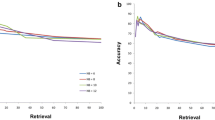Abstract
Logical interaction between every pair of genes in a gene interaction network affects the observable behavior of any organism. This genetic interaction helps us to identify pathways of associated genes for various diseases and also finds the level of interaction between the genes in the network. In this paper, at first we have used three correlation measures, like Pearson, Spearman and Kendall-Tau to find the interaction level in a gene interaction network. Rough set can also be used to find the level of interaction, as well as direction of interaction between every pair of genes. That’s why in the second phase of the experiment, entropy measure & Rough set theory are also used to determine the level of interaction between every pair of genes as well as finds the direction of interaction that indicates which gene regulates which other genes. Experiments are done on normal & diseased samples of Colorectal Cancer dataset (GDS4382) separately. At the end we try to find out those interactions responsible for this cancer disease to take place. To validate the experimental results biologically we compare it with interactions given in NCBI database.
Access this chapter
Tax calculation will be finalised at checkout
Purchases are for personal use only
Similar content being viewed by others
References
Alberts, B., Johnson, A., Lewis, J., Raff, M., Roberts, K., Walter, P.: Molecular Biology of the Cell, 4th edn. Garland Science, New York (2002)
Help Me Understand Genomics– Cells and DNA, Genetics Home Reference (2017)
Watkinson, J., Wang, X., Zheng, T., Anastassiou, D.: Identification of gene interactions associated with disease from gene expression data using synergy networks. BMC Syst. Biol. 2, 10 (2008)
Khosravi, P., Gazestani, V.H., Pirhaji, L., Law, B., Sadeghi, M., Goliaei, B.: Inferring interaction type in gene regulatory networks using co-expression data. Algorithms Mol. Biol. 10, 23 (2015)
Wang, Y.X.R., Jiang, K., Feldman, L.J., Bickel, P.J., Huang, H.: Inferring gene–gene interactions and functional modules using sparse canonical correlation analysis. Ann. Appl. Stat. 9(1), 300–323 (2015)
Hsu, C.L., Juan, H.F., Huang, H.C.: Functional analysis and characterization of differential co-expression networks. Sci. Rep. 5, 13295 (2015)
Seal, D.B., Saha, S., Chatterjee, M., Mukherjee, P., Mukherjee, A., Mukhopadhyay, B., Mukherjee, S.: Gene — Gene interaction: a clustering, correlation & entropy based approach. In: 2016 IEEE 7th Annual Ubiquitous Computing, Electronics & Mobile Communication Conference (UEMCON), New York, NY, pp. 1–6 (2016). https://doi.org/10.1109/uemcon.2016.7777833
Meng, Y., Groth, S., Quinn, J.R., Bisognano, J., Wu, T.T.: An exploration of Gene-Gene interactions and their effects on hypertension. Int. J. Genomics 2017, 7208318 (2017)
Pawlak, Z.: Rough sets. Int. J. Comput. Inf. Sci. 11, 341–356 (1982)
Pearson, K.: Notes on regression and inheritance in the case of two parents. Proc. R. Soc. Lond. 58, 240–242 (1895)
Spearman, C.: The proof and measurement of association between two things. Am. J. Psychol. 15, 72–101 (1904). https://doi.org/10.2307/1412159
Kendall, M.: A new measure of rank correlation. Biometrika 30(1–2), 81–89 (1938). https://doi.org/10.1093/biomet/30.1-2.81
Kullback, S., Leibler, R.A.: On information and sufficiency. Ann. Math. Stat. 22(1), 79–86 (1951). https://doi.org/10.1214/aoms/1177729694. MR 0039968
Author information
Authors and Affiliations
Corresponding author
Editor information
Editors and Affiliations
Rights and permissions
Copyright information
© 2018 Springer International Publishing AG, part of Springer Nature
About this paper
Cite this paper
Saha, S., Roy, S., Ghosh, A., Dey, K.N. (2018). Gene-Gene Interaction Analysis: Correlation, Relative Entropy and Rough Set Theory Based Approach. In: Rojas, I., Ortuño, F. (eds) Bioinformatics and Biomedical Engineering. IWBBIO 2018. Lecture Notes in Computer Science(), vol 10814. Springer, Cham. https://doi.org/10.1007/978-3-319-78759-6_36
Download citation
DOI: https://doi.org/10.1007/978-3-319-78759-6_36
Published:
Publisher Name: Springer, Cham
Print ISBN: 978-3-319-78758-9
Online ISBN: 978-3-319-78759-6
eBook Packages: Computer ScienceComputer Science (R0)




